BUSINESS AND THE NDP: Fleurhof development in line with intergrated housing policy
by Yule Edwards,
2014-11-20 07:01:32.0
BUSINESS AND THE NDP: Fleurhof development in line with intergrated housing policy
WITH a strong handshake and intense, shining eyes, Joseph Muregu introduces himself. His builder’s overalls clothe a wiry frame and his hands are rough, but here is a charismatic man. "I’m a community leader," he says, "I found out early what they were doing with the land around us and I realised that people from my hostel could benefit," he says of the old mining land between Florida and Meadowlands.
Muregu was previously a tenant of the Rand Leases Hostel, a remnant of the politically fraught history of that area, currently being converted into a school. In February last year though, Muregu became a beneficiary of a Reconstruction and Development Programme (RDP) house. "I applied and about six months later, I had a house," he says proudly.
We are in one of the extensions of Fleurhof, an affordable housing development that lies between Florida and Soweto. This is not just a low-cost housing project for the poor: free to those who qualify, Breaking New Ground (BNG) or RDP units are integrated with government-subsidised housing and completely bonded homes. It is being developed by Calgro M3 Holdings, which specialises in integrated housing.
The BNG policy stems from government’s attempt to refocus attention on the development of sustainable human settlements rather than giving free housing to the poor. The idea is to alter housing patterns by integrating different wealth communities, hence uplifting the entire community in the area.
Fleurhoff caters for fully subsidised homes and the various subsidies available to different income levels, as well as fully bonded homes.
At Fleurhoff, the intersection of Minerva Avenue and Akasia Road has been dubbed "Integrated Corner" by Tinus Erasmus, head of project management at Calgro M3. He points to one unit: "That’s an RDP home. That’s a Gap unit," pointing across the street, "and that’s a fully bonded house," he says of a unit at the corner.
Erasmus says there is an aspirational aspect to Fleurhof. "You could start off in one of the cheapest subsidised units and work your way up to something fully owned. But you’d stay in your community, your children would stay in the same school, your church wouldn’t change."
Two-thirds of residents are income-earners, so they pay rates and taxes, which means service delivery is not a problem. "You have a majority here who pulls up the rest, that’s human nature," he says.
Murega’s house is basic, a shell, really. A couple of plug points and cold running water is included, but solar geysers are optional extras. The unit covers basic human needs for people who wouldn’t otherwise have proper housing.
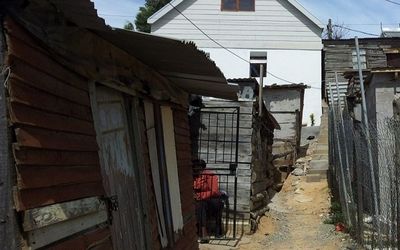
Picture: ARC ECO HOMES
WITH a strong handshake and intense, shining eyes, Joseph Muregu introduces himself. His builder’s overalls clothe a wiry frame and his hands are rough, but here is a charismatic man. "I’m a community leader," he says, "I found out early what they were doing with the land around us and I realised that people from my hostel could benefit," he says of the old mining land between Florida and Meadowlands.
Muregu was previously a tenant of the Rand Leases Hostel, a remnant of the politically fraught history of that area, currently being converted into a school. In February last year though, Muregu became a beneficiary of a Reconstruction and Development Programme (RDP) house. "I applied and about six months later, I had a house," he says proudly.
We are in one of the extensions of Fleurhof, an affordable housing development that lies between Florida and Soweto. This is not just a low-cost housing project for the poor: free to those who qualify, Breaking New Ground (BNG) or RDP units are integrated with government-subsidised housing and completely bonded homes. It is being developed by Calgro M3 Holdings, which specialises in integrated housing.
The BNG policy stems from government’s attempt to refocus attention on the development of sustainable human settlements rather than giving free housing to the poor. The idea is to alter housing patterns by integrating different wealth communities, hence uplifting the entire community in the area.
Fleurhoff caters for fully subsidised homes and the various subsidies available to different income levels, as well as fully bonded homes.
At Fleurhoff, the intersection of Minerva Avenue and Akasia Road has been dubbed "Integrated Corner" by Tinus Erasmus, head of project management at Calgro M3. He points to one unit: "That’s an RDP home. That’s a Gap unit," pointing across the street, "and that’s a fully bonded house," he says of a unit at the corner.
Erasmus says there is an aspirational aspect to Fleurhof. "You could start off in one of the cheapest subsidised units and work your way up to something fully owned. But you’d stay in your community, your children would stay in the same school, your church wouldn’t change."
Two-thirds of residents are income-earners, so they pay rates and taxes, which means service delivery is not a problem. "You have a majority here who pulls up the rest, that’s human nature," he says.
Murega’s house is basic, a shell, really. A couple of plug points and cold running water is included, but solar geysers are optional extras. The unit covers basic human needs for people who wouldn’t otherwise have proper housing.




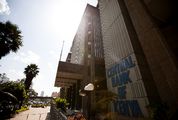
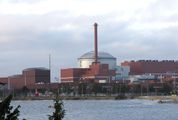



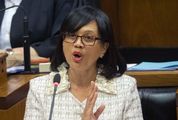
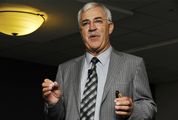









Change: -0.47%
Change: -0.61%
Change: 0.53%
Change: -0.42%
Change: -2.12%
Data supplied by Profile Data
Change: -0.46%
Change: -0.22%
Change: -0.47%
Change: 0.00%
Change: -0.21%
Data supplied by Profile Data
Change: -1.29%
Change: -1.34%
Change: -0.83%
Change: -1.44%
Change: -1.24%
Data supplied by Profile Data
Change: 0.65%
Change: 1.35%
Change: 1.45%
Change: 0.00%
Change: 1.15%
Data supplied by Profile Data